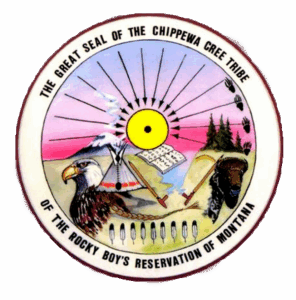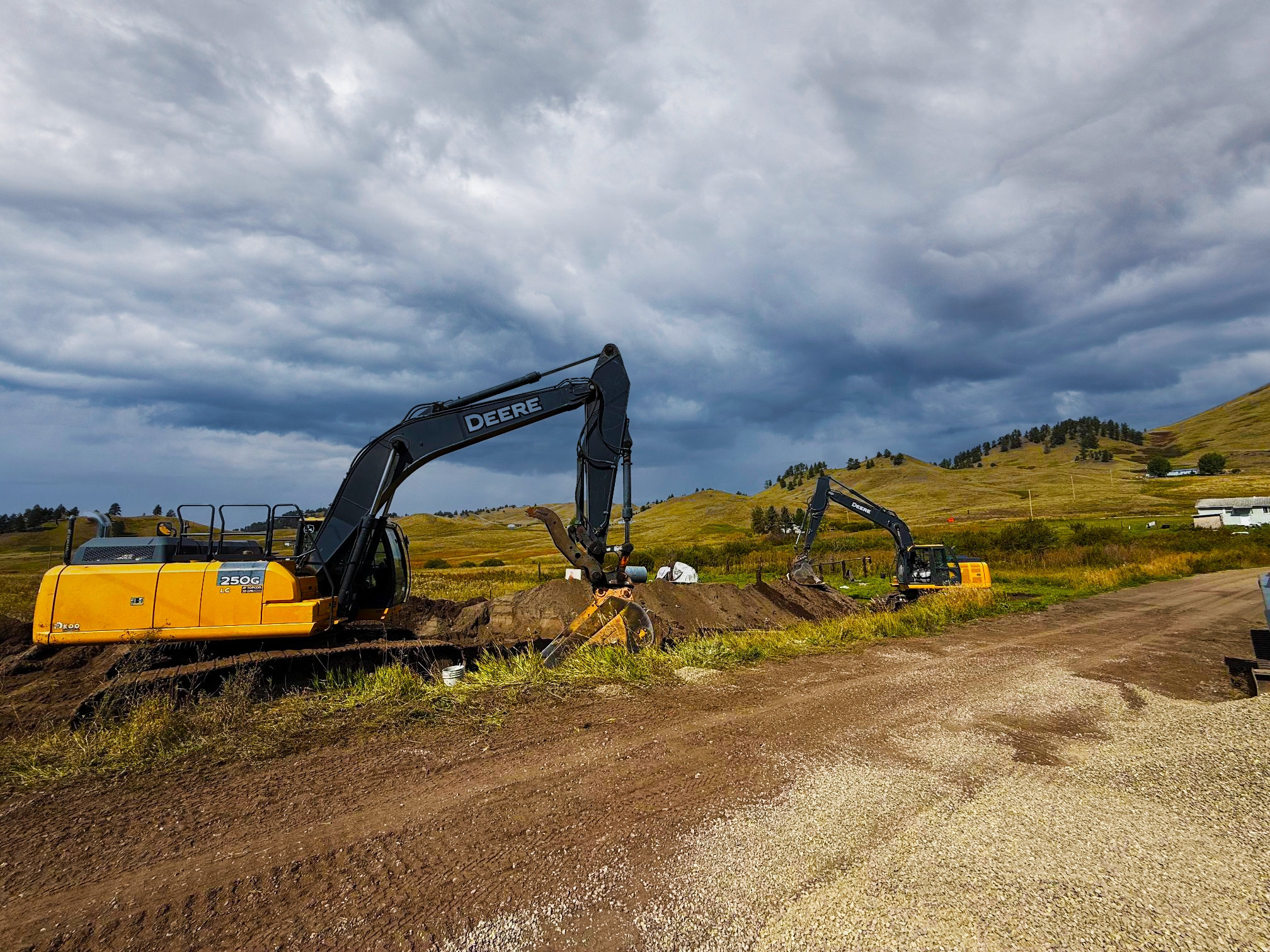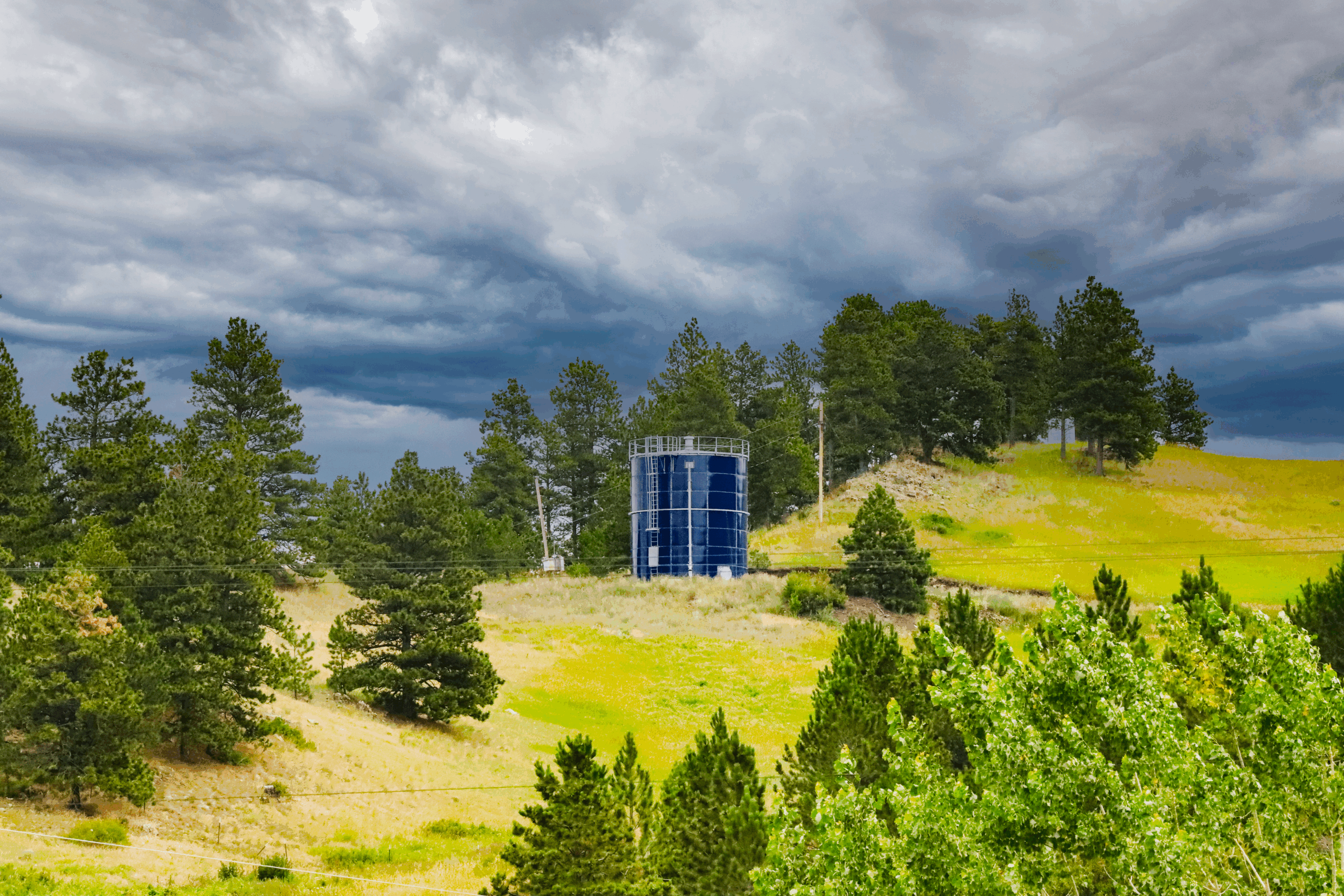DESIGNING FOR TODAY, ENGINEERING FOR GENERATIONS: ROCKY BOY PROJECTS 2025
Rocky Boy Reservation—Box Elder, Montana
For nearly a decade, Water & Environmental Technologies (WET) has partnered with the Chippewa Cree Tribe of the Rocky Boy’s Indian Reservation in northern Montana, providing engineering, environmental, and infrastructure planning services across multiple Chippewa Cree Tribal Departments. Our work has included designing wastewater lagoons, roads, and water storage tanks, as well as preparing successful grant applications, preliminary engineering reports, environmental assessments for NEPA, and training programs for Tribal staff. Projects have spanned essential community services and land development, including water, wastewater, solid waste, housing developments, roads, and cultural resource protection, which have been nearly entirely built using Tribal labor and equipment. These projects represent far more than technical achievements. They reflect enduring partnerships rooted in collaboration and an understanding of Tribal sovereignty and funding mechanisms.
Working with sovereign nations like the Rocky Boy’s Reservation requires a more profound understanding than traditional consulting. Tribes are not just stakeholders within standard state and federal systems; they are sovereign governments with their own priorities, procedures, and protocols. Successful projects must navigate a unique framework that includes Tribal law, federal funding programs, oversight by the Bureau of Indian Affairs, Federal EPA oversight, and locally available labor and resources. Over time, WET has learned that each project, whether a lagoon cleanout, road repair, or subdivision design, is part of a larger effort to strengthen Tribal infrastructure and promote self-sufficiency. By collaborating with Tribal departments, WET has gained not only technical expertise but also a practical understanding of what it means to partner with a sovereign nation.
Work has carried on steadily through the summer of 2025 and will continue into the fall, with crews advancing the project as far as possible before the winter season brings construction to a pause.
September marked the start of the Newtown Sewer Main Extension project along Duck Creek Road, a vital infrastructure upgrade on the Rocky Boy’s Reservation. Secured through American Rescue Plan Act (ARPA) competitive grant funding with the State of Montana, this project involved the installation of a complete sewer system with both gravity and mechanically pumped force mains to ensure reliable wastewater collection and conveyance for residents and Tribal facilities in the Agency community. Gravity mains utilize the natural slope of the land to move wastewater, while force mains depend on pumps and pressure to transport flow in areas where gravity alone isn’t enough—such as flat ground, steep terrain, or uphill sections. Construction is scheduled to continue through September, October, and November, progressing until the snow arrives. By investing in this crucial utility, made possible through ARPA support, the Chippewa Cree Tribe is bolstering long-term community health and environmental protection while setting the stage for future growth and development in the heart of the reservation.
The Eagleman Water System project also broke ground in September and marks a significant step forward in modernizing local water infrastructure. WET’s engineers designed and oversaw the construction, providing surveying, on-site representation, and as-built documentation to guide the work. The project included rerouting waterlines, upsizing mains, and connecting the new distribution system to existing mains., These improvements not only ensure reliable service to residents but also strengthen the system’s capacity, resilience, and long-term efficiency.
Another major infrastructure effort during the summer and fall of 2025, supported by additional competitive ARPA grant funding, has been the dredging of the Middle Dry Fork sewer lagoon. This work uses a newly purchased pontoon dredge—a floating machine that stirs up and suctions sludge from the lagoon bottom, pumping the material to a collection pond for dewatering while returning clean water to the lagoon. Operating from the water’s surface, the dredge allows efficient sludge removal to restore and maintain the lagoon’s treatment capacity. At the same time and in the same area, construction is underway on the new Multi-Community Lagoon Expansion, a facility designed by WET engineers to further expand wastewater treatment capacity for the Tribe in the primary development area located between Lower Dry Fork housing and the Boneau community.
The new senior housing subdivision marks a significant milestone for the Rocky Boy’s Tribe, providing 28 modern homes explicitly designed for elder families in the community. As of September 2025, construction has been completed with all homes installed, water and sewer infrastructure in place, curbing finished, and asphalt paving complete throughout the subdivision. The subdivision represents a significant investment in comfort, safety, and accessibility for Tribal seniors—creating a welcoming place with much-needed additional home capacity in close proximity to the Rocky Boy Health Center, Administrative Site Infrastructure, Tribal Headquarters, and Youth Center facilities.
That was not the only housing development going up around Rocky Boy in 2025. Near the Rocky Boy Health Center, several new homes and two recently completed roads have been finished as part of the Clinic Housing project, providing essential housing for the reservation’s medical staff. From 2022 to 2023, WET played a key role in this project, handling the design, construction oversight, and securing all necessary permits to ensure the homes met both Tribal and regulatory standards.
Rounding out the 2025 projects was the lining of the Boneau underground concrete water tanks. Lining a tank involves cleaning the interior and adding a protective coating to keep the water safe and the tank leak-free. For this project, WET engineers oversaw the entire process, beginning with an initial inspection and testing that demonstrated safe confined-space entry. The tanks were thoroughly cleaned and dried, a protective liner was installed, and the liner was spray-sealed to ensure a watertight and potable water-compliant finish. WET staff inspected each step to guarantee both quality and safety throughout the project.
Together, these projects showcase not only WET’s technical skills but also the strength of our partnership with the Chippewa Cree Tribe. From wastewater systems and water storage upgrades to housing and roads, each project contributes to a broader effort to bolster Tribal infrastructure, promote self-sufficiency, and improve community well-being. By working closely with Tribal departments, respecting Tribal sovereignty, and managing the unique challenges of funding and construction on the reservation, WET has helped deliver sustainable, durable solutions that benefit residents today and build a foundation for future generations. The work completed by 2025 reflects this ongoing dedication, proving that thoughtful engineering and collaboration can create a meaningful, lasting impact on the community and the Tribe’s ability to thrive.










